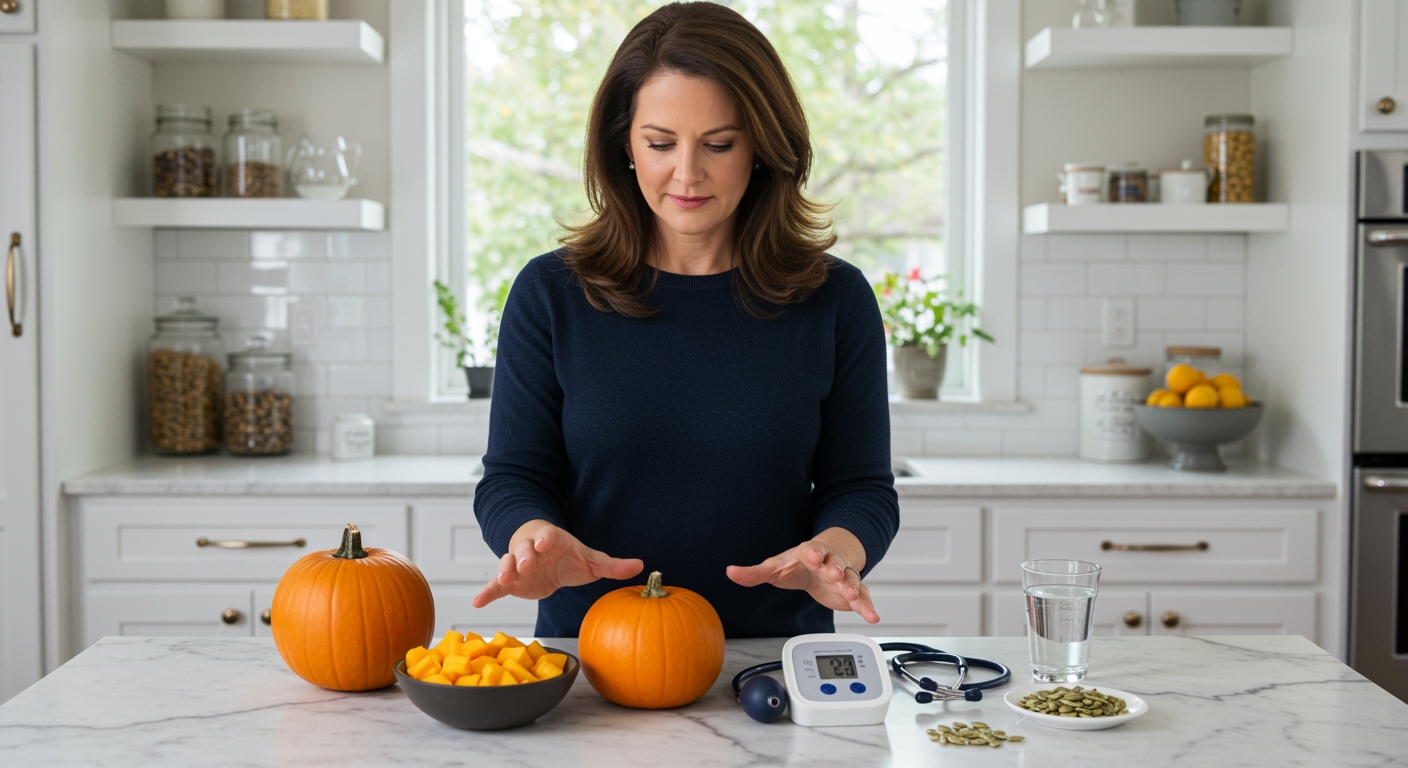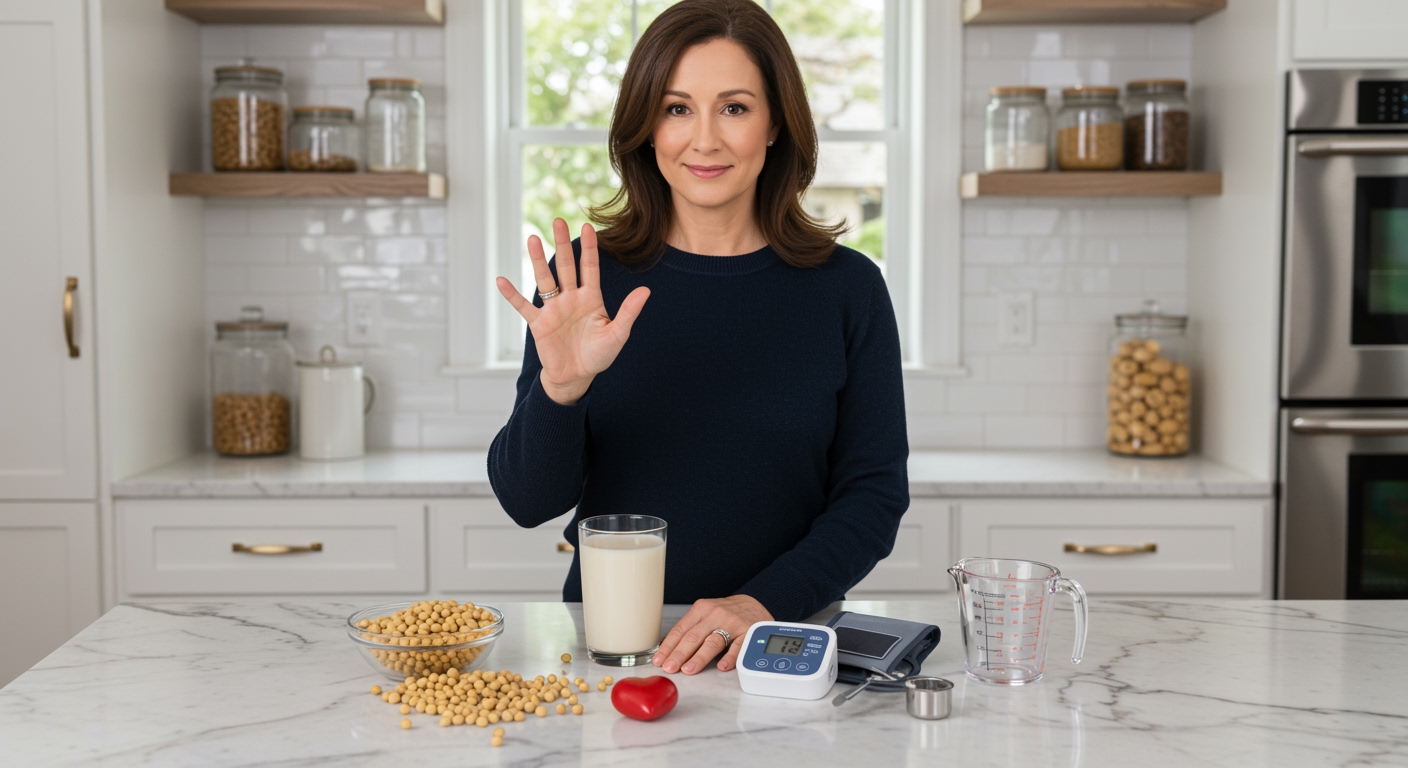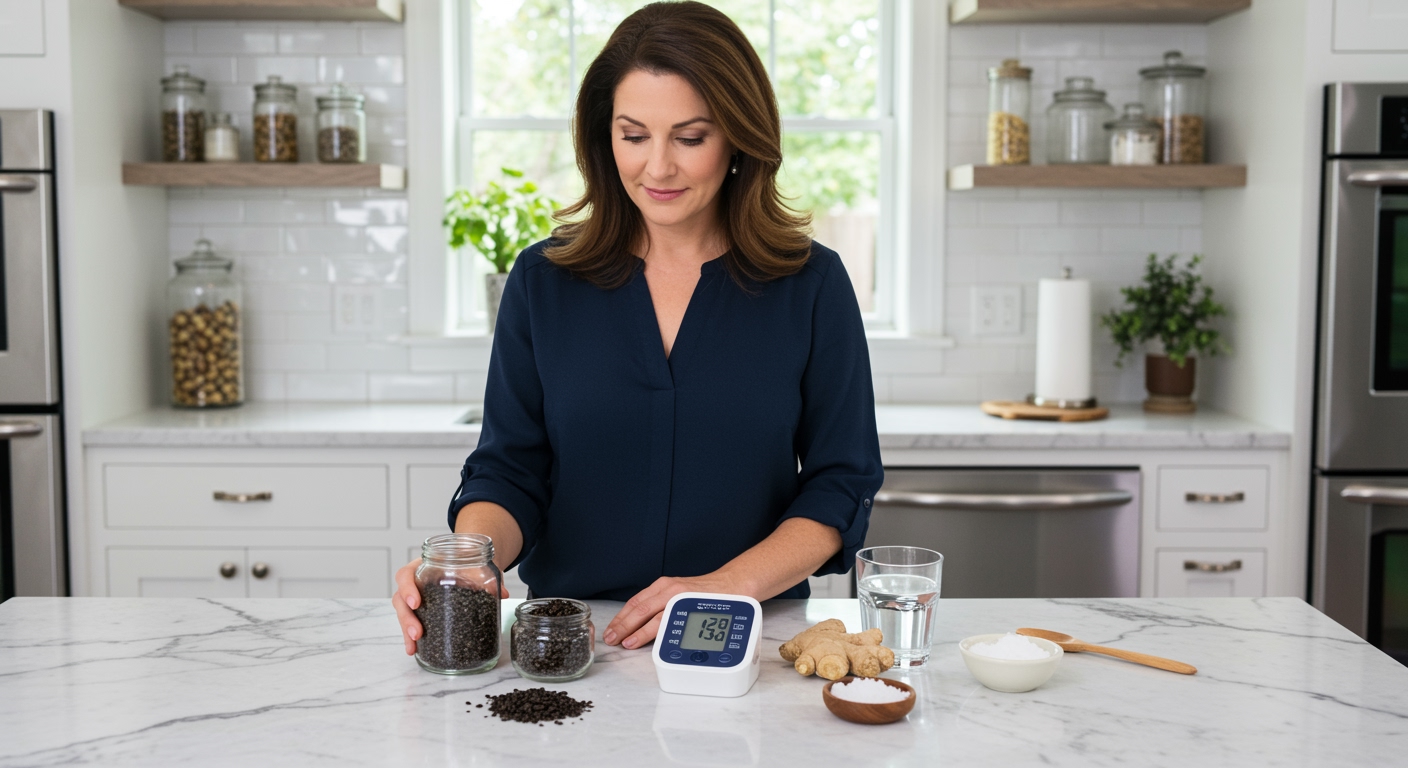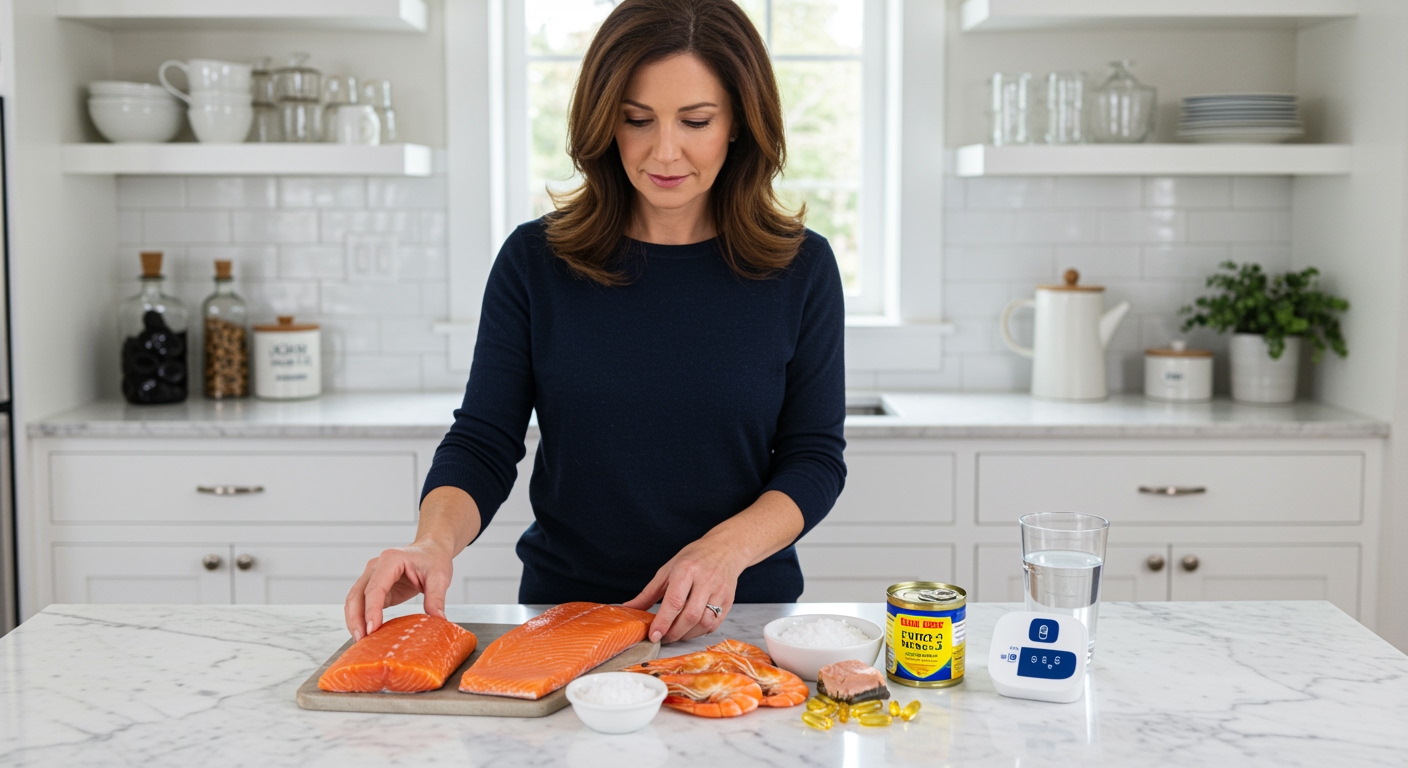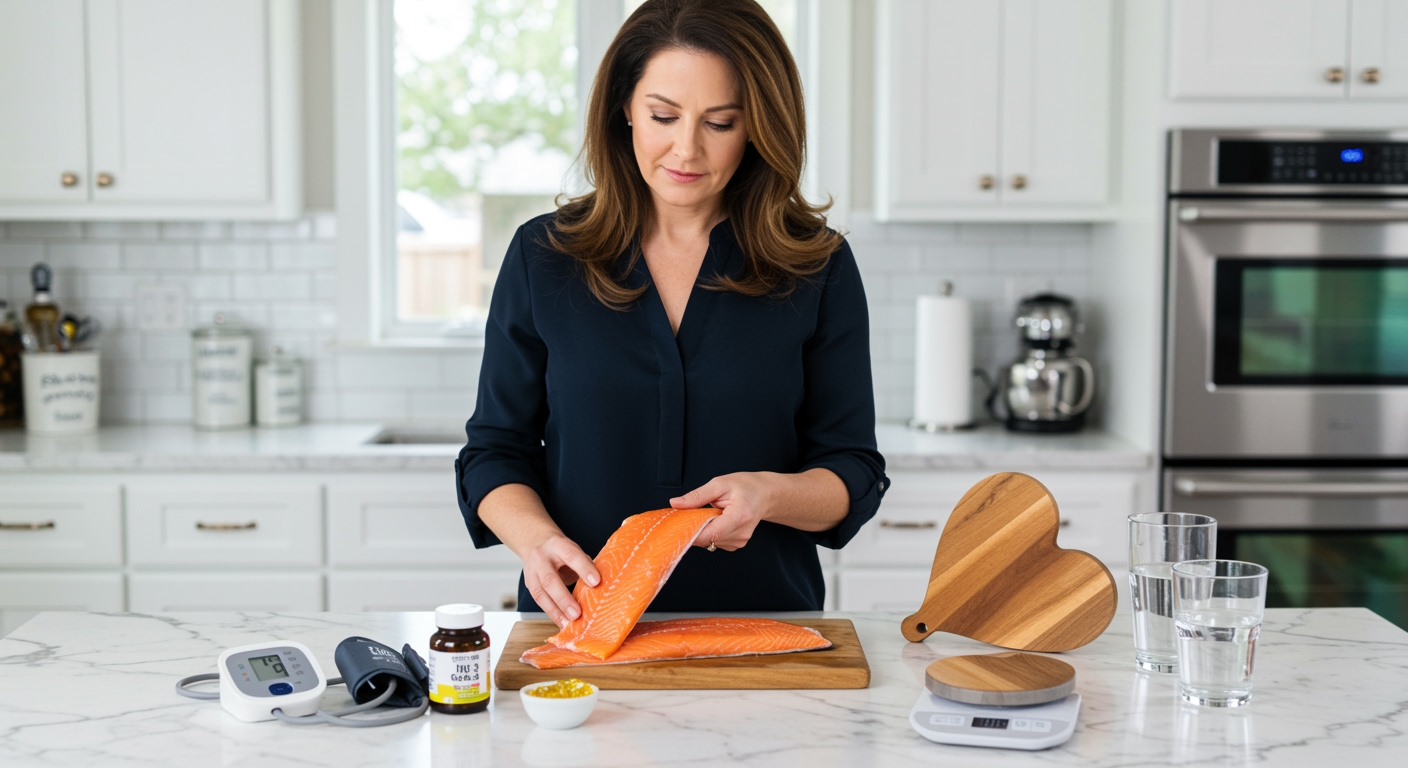✪ Key Takeaway: Pumpkin provides moderate potassium that may help low blood pressure slightly, but it cannot replace proper medical treatment.
Introduction
You grab a can of pumpkin from your pantry and wonder if this orange superfood can help your low blood pressure numbers.
Many people with hypotension search for natural foods that might give their blood pressure a gentle boost without harsh medications.
Hi, I’m Abdur, your nutrition coach and today I’m going to explain exactly how pumpkin affects low blood pressure and whether it deserves a spot in your daily meal plan.
What Does Pumpkin Actually Do to Blood Pressure?
Pumpkin contains potassium, a mineral that typically helps lower blood pressure rather than raise it.
One cup of cooked pumpkin provides about 564 milligrams of potassium, which represents roughly 12% of your daily needs.
This creates a problem for people with low blood pressure who think pumpkin will help their condition.
Potassium works by helping your kidneys remove excess sodium from your body through urine.
When sodium levels drop, your blood vessels relax and blood pressure typically decreases.
However, pumpkin also contains natural sugars and carbohydrates that can provide a temporary energy boost.
This energy boost might make you feel more alert, but it does not directly raise your blood pressure in a meaningful way.
✪ Fact: Pumpkin contains more potassium per serving than bananas, which are famous for this mineral.
Can Pumpkin Seeds Help Low Blood Pressure Better?
Pumpkin seeds offer a different nutritional profile than the flesh of the pumpkin itself.
These seeds contain magnesium, zinc, and healthy fats that support overall cardiovascular health.
One ounce of pumpkin seeds provides about 168 milligrams of magnesium, which is roughly 40% of your daily requirement.
Magnesium helps regulate blood pressure by supporting proper muscle function in your heart and blood vessels.
However, magnesium typically helps maintain normal blood pressure rather than raising low blood pressure.
The healthy fats in pumpkin seeds can support your overall energy levels and help you feel more stable throughout the day.
This stability might help you manage symptoms of low blood pressure like dizziness or fatigue, but it will not cure the underlying condition.
✪ Pro Tip: Roast pumpkin seeds with a pinch of sea salt to add natural sodium that may help low blood pressure slightly.
How Should You Prepare Pumpkin for Low Blood Pressure?
The way you prepare pumpkin can influence how it affects your blood pressure and overall health.
Adding a small amount of sea salt when cooking pumpkin can provide sodium that may help raise low blood pressure temporarily.
Sodium helps your body retain water, which increases blood volume and can raise blood pressure.
Roasting pumpkin with olive oil adds healthy fats that help your body absorb fat-soluble vitamins like vitamin A.
Pumpkin contains beta-carotene, which your body converts to vitamin A for immune support and eye health.
Combining pumpkin with protein sources like nuts or seeds can help stabilize your blood sugar levels.
Stable blood sugar prevents the energy crashes that can make low blood pressure symptoms feel worse throughout your day.
✪ Note: Canned pumpkin often contains added sodium, which might be more helpful for low blood pressure than fresh pumpkin.
What Foods Actually Help Low Blood Pressure?
If pumpkin is not the answer for low blood pressure, you need to know which foods actually help this condition.
Foods with moderate amounts of sodium can help raise blood pressure when consumed as part of a balanced diet.
Pickles, olives, and naturally fermented foods provide sodium along with beneficial probiotics for gut health.
Drinking adequate water throughout the day helps maintain proper blood volume, which supports healthy blood pressure.
Dehydration can make low blood pressure symptoms worse by reducing the amount of fluid in your bloodstream.
Foods rich in vitamin B12 and folate help prevent anemia, which can contribute to low blood pressure.
Eggs, fish, and leafy greens provide these nutrients along with other compounds that support healthy circulation.
✪ Pro Tip: Small, frequent meals help prevent blood pressure drops that often occur after large meals.
When Should You Avoid Pumpkin for Blood Pressure?
Certain situations make pumpkin less suitable for people managing low blood pressure concerns.
If you take medications for blood pressure, the potassium in pumpkin might interact with your treatment plan.
Some blood pressure medications work by helping your body retain potassium, and adding more through food could create imbalances.
People with kidney problems should be careful with high-potassium foods like pumpkin because their kidneys cannot process excess potassium effectively.
This can lead to dangerous potassium buildup in the blood, which affects heart rhythm and muscle function.
If you experience severe low blood pressure symptoms like fainting or chest pain, pumpkin will not provide the immediate relief you need.
These symptoms require prompt medical attention rather than dietary interventions alone.
✪ Note: Always consult your doctor before making significant dietary changes if you have diagnosed low blood pressure.
The Bottom Line
Pumpkin provides valuable nutrients but will not significantly raise low blood pressure due to its high potassium content.
Real health comes from understanding what your body actually needs, not from chasing miracle foods that promise impossible results.
I would love to hear about your experience with pumpkin and blood pressure, or any questions you might have about managing low blood pressure naturally through your diet.
References
At NutritionCrown, we use quality and credible sources to ensure our content is accurate and trustworthy. Below are the sources referenced in creating this article:
- Healthline: Pumpkin: Nutrition, Benefits and How to Eat
- PMC: Nutritional and Health Benefits of Pumpkin
- American Heart Association: Low Blood Pressure – When Blood Pressure Is Too Low
- Cleveland Clinic: Low Blood Pressure (Hypotension)
